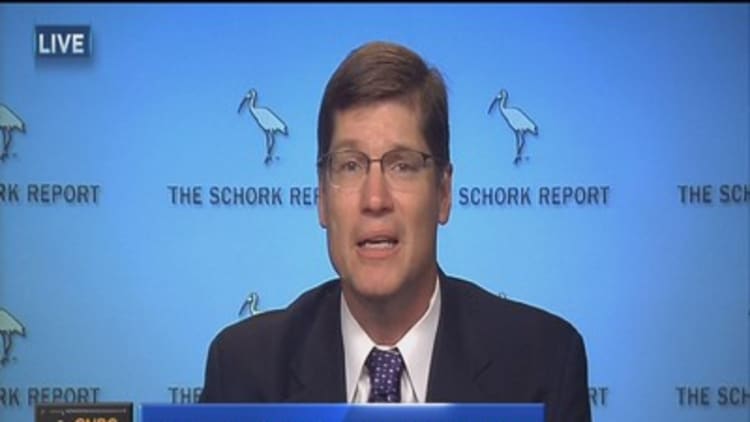
U.S. oil exploration and production companies have been living on the Federal Reserve's easy money throughout the sharp downturn in crude prices, but their credit supply is about to run dry, oil analyst Stephen Schork said Wednesday.
"The E&Ps have been bleeding. They're going to start to hemorrhage in the next couple of months," the publisher of the Schork report told CNBC's "Squawk Box."
These drillers were able to hedge forward production because future prices remained high in the second quarter through 2018.
"Hedging equals collateral. So with that collateral, the E&Ps were able to live off of the Fed's easy money through the summer," Schork said.
Although the Fed is widely expected to raise interest rates as early as this month from near zero to 25 basis points, its monetary policy is still expected to be accommodative. The larger issue for drillers is the continuing oil price rout, which reduces the value of their underlying assets. Banks determine how much drillers can borrow based on those assets.
Now that the back end of the price curve has now crashed, exploration and production companies are unable to hedge to the same degree, he said. These drillers face a re-evaluation of their credit in the fall, and banks are likely to significantly reduce their ability to borrow, Schork added.
Read More Oil collapse couldn't come at worse time for industry
"You're about to see a gusher coming out of the E&Ps in the fourth quarter, and that does not bode well for supply," he said.
However, any cutback in supply will likely only come from U.S. producers, he said, adding that Saudi Arabia still has little incentive to reduce production.
Meanwhile, demand is about to plummet as the summer driving season winds down and refineries take capacity offline to perform seasonal maintenance on their facilities, Schork said. Historically, that has reduced demand by about 500,000 to 1 million barrels per day.
Given current conditions, Schork said, "Oil at around $40 a barrel is disconnected from reality, so there is no economic line to lean against. We're all trading on psychological numbers right now."
With U.S. crude having broken below the psychological barrier of $40, the next barrier is the $32.40 low touched during the depths of the Great Recession, he said.
"If I had to pick a number out of the air—which is what I'm doing—$32.40 is now the target for the bears to be shooting for," he said.


